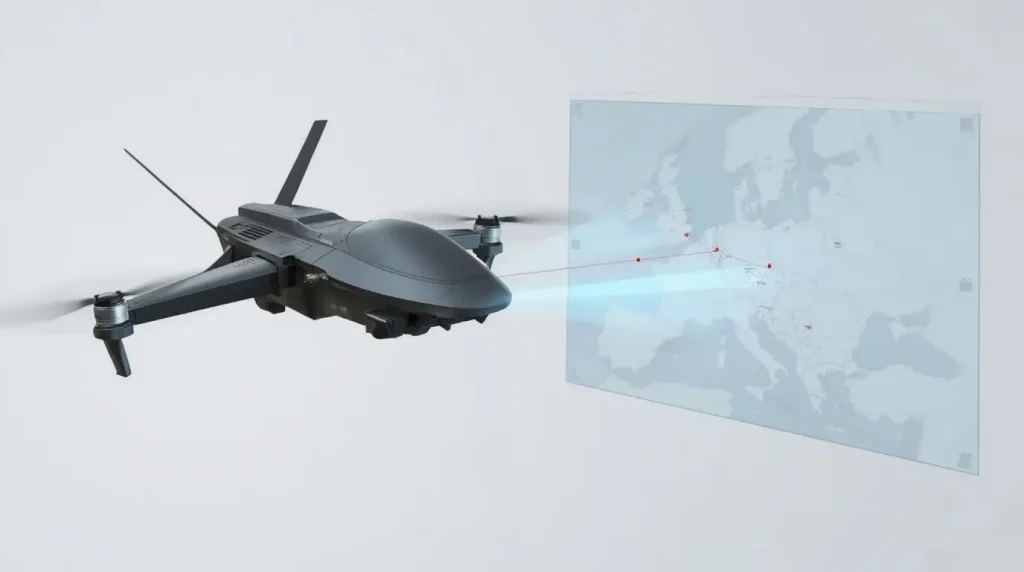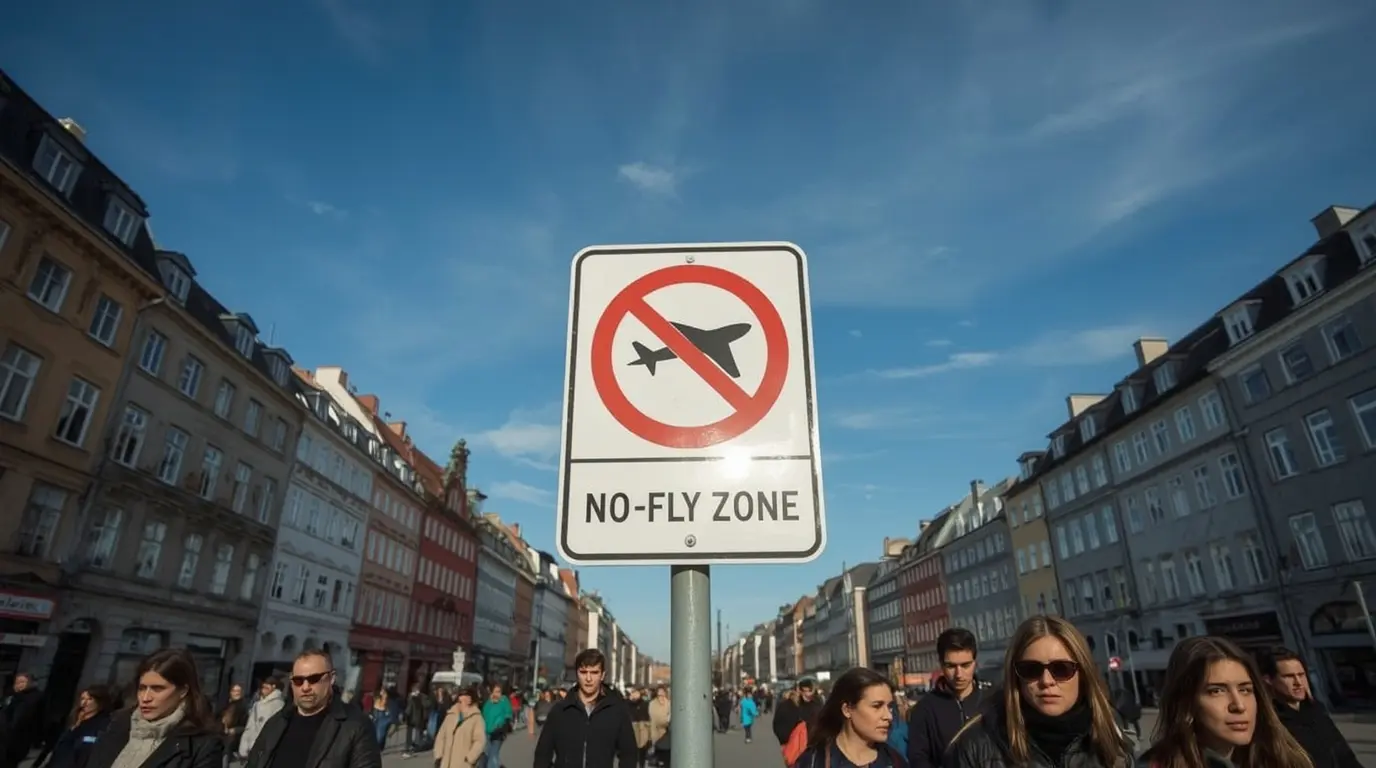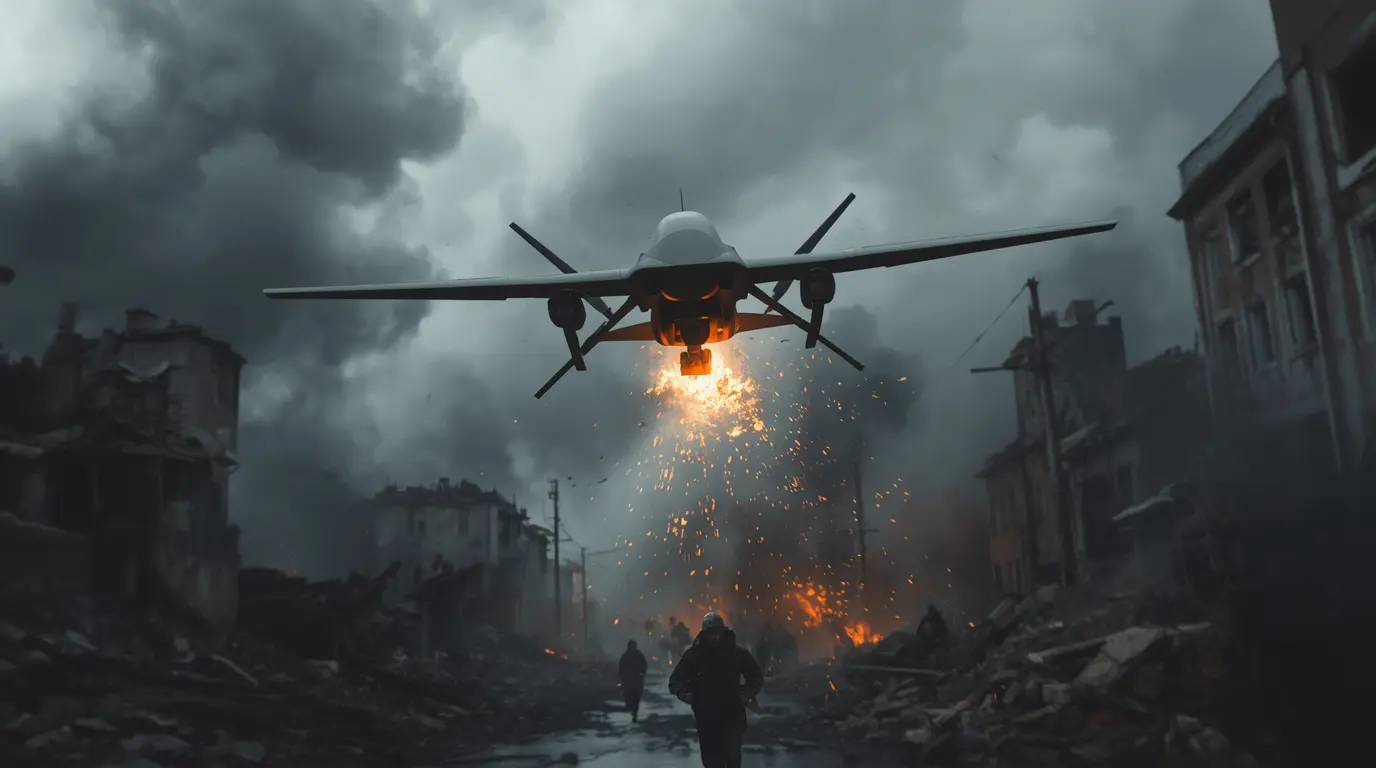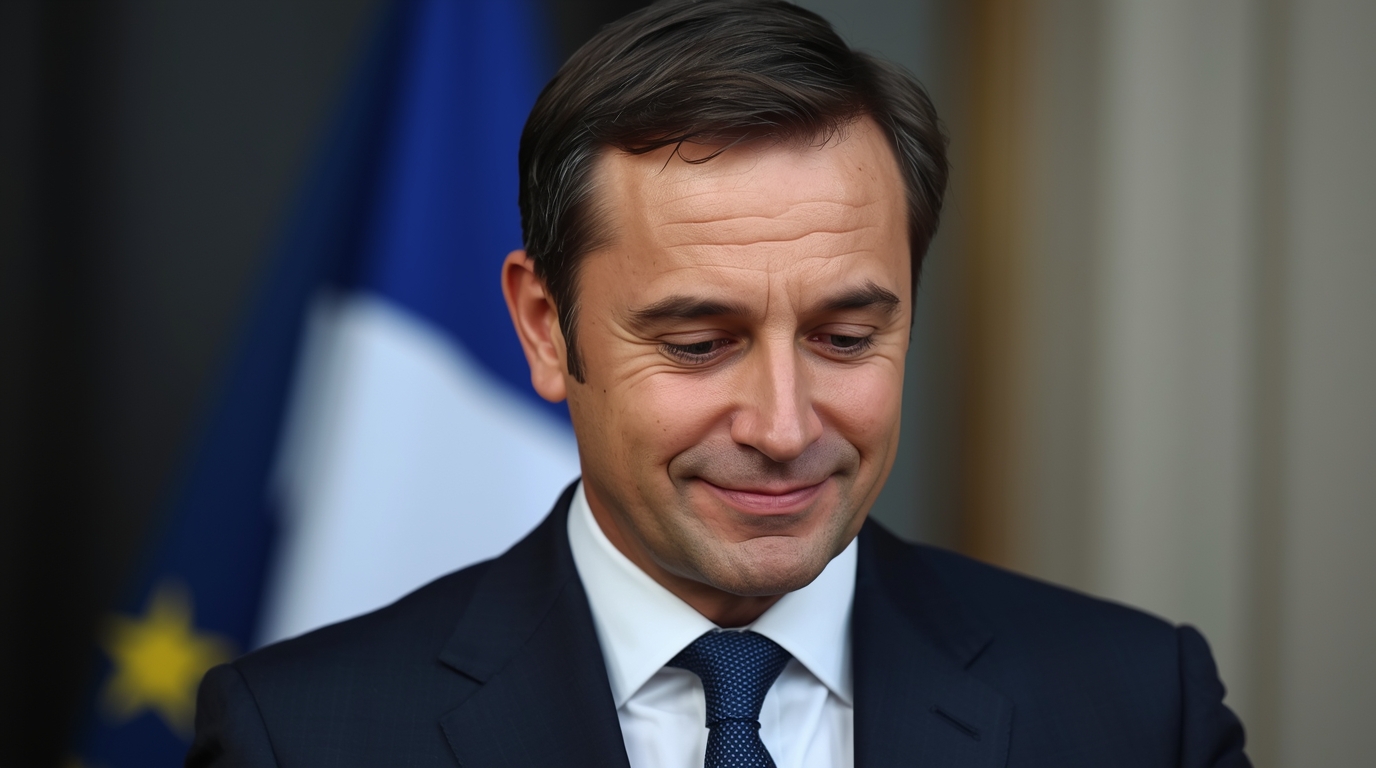Introduction: How Continentals Responded to the Violation of Airspace
In an unprecedented response to the escalating violations of airspace, the leaders of the European Union have unified to support the construction of a defensive drone wall along the eastern periphery of the bloc. The decision, made during a an informal summit in Copenhagen, is the first step in integrating continental defense after a number of drone incursions attributed to the Russian state have been reported by several member states.
The defensive drone wall proposal is constructed by European Commission President Ursula von der Leyen, who imagines a networked system of detection and neutralization, as opposed to a physical structure. This wall is a direct response to what Mette Frederiksen, Prime Minister of Denmark, describes as the most challenging and dangerous situation since the end of the Second World War. This news blog focuses on the technology and political environment that support the drone wall, as well as on the obstacles to its implementation.
What is the Drone Wall? Contemplating the Concept
The proposed drone wall is an advanced ‘system of systems’ defense structure that stretches for thousands of kilometers along the eastern flanks of NATO and is multi-layered in design. The drone wall is not a system of single technology.

Core Components and Technology
At it’s most basic level, the drone wall would integrate multiple important components, including:
- Detection and Tracking: A system of radar, acoustic sensors and other monitoring to locate unpermitted drones.
- Reconnaissance Drones: Drones that can roam the border areas and locate probable targets.
- Interceptor Drones: Specialized drones that can take out hostile drones via detonation or direct impact.
- Command Software: Systems that fuse sensor data and enable coordinated action across multiple countries.
A technological approach to this issue concentrates on low costs which was emphasized by NATO Secretary General Mark Rutte. During discussions he stated “we cannot spend millions of euros or dollars on missiles to take out drones which are only costing a couple of thousand dollars.” Thus, this drone wall approach concentrates on the cheaper forms of electronic warfare, like jamming and signal disruption, together with physical drone take downs by specialized anti drone UAVs.
The Catalysts: Why Europe is Racing to Build a Drone Wall
The drone wall initiative has recently gained greater urgency due to a sharp rise in the violations of airspace in the Northern and Eastern Europe over the last couple of weeks. These incidents have once again shown the major gaps that still lie in defensive capabilities the continent has and the growing bench of threats in the air.
A New History of Aggravations
As the Copenhagen summit approached, a distinctly worrying series of provocations began to occur.
Poland: Approximately 20 Russian drones crossed the border, prompting expensive and aggressive military actions including the deployment of Polish fighter jets, helicopters, and Patriots.
Estonia: Russian MiG-31 fighter jets breached Estonian airspace for a 12-minute window, garnering an Article 4 call to NATO.
Denmark: Several airports were disrupted by rogue drones classified by the state as activities of a “professional actor,” though the Russia attribution remains vague.
Germany and Norway: Passive drone activities were sighted, resulting in the delay of several flights at Oslo airport.
European leaders have attributed more significance to these events than arbitrary provocations. Ursula von der Leyen considered them “part of a hybrid war,” set to “create chaos and discord in our societies.” Such a perception is what drives the operational priority of the drone wall.
Political Support and Imperative Leadership: Who is In Favor of the Drone Wall
Although leaders were not as enthusiastic on the matter, the Drone Wall at the Copenhagen summit still received a sufficient amount of political backing. The leaders constituting the EU, although differing on the matter, have united regarding the timeline of the subject.
Table. Political Supporters on the Drone Wall.
| Leader | Role | Statement on Drone Wall |
|---|---|---|
| Ursula Von Der Leyen | European Commission President | Called for “immediate actions” as part of an “Eastern Flank Watch” which includes the system. |
| Mark Rutte | NATO Secretary General | labelled the initiative as “timely and necessary” |
| Mette Frederiksen | Prime Minister of Denmark | Called for the construction of “a European network of anti-drone measures” |
| Evika Silina | Prime Minister of Latvia | has confidence in building the Drone Wall “in a much shorter time” than the estimates given by Germany. |
Although the initiative received support, the attitude towards the Drone Wall concept tends to be more pessimistic. The German Minister of Defense, Boris Pistorius, in talking on the matter has said “We are not talking about a concept that will be realized in the next 3 or 4 years” which serves to illustrate the point of caution that is being put forth. The political urge for a solution and the practical realization that a complex multinational defense needs to be put in place serves an explanation for the Pistorius tempering.
The Challenge of Implementation: Constructing the Drone Wall
The drone wall’s transformation from a political metaphor to a literal structure comes with a lot of challenges. Industry insiders who understand defense tech cite a lack of resources and lack of coordination to accomplish many of the political challenges as obstacles to achieving the goal.
Industry Readiness and Technical Viability
The technology needed for an effective drone wall as described by Paul Strobel of German drone manufacturer Quantum Systems, is already available. Strobel discussed a network of interceptor drones along the border with the US like portable air defense batteries and he described the system as powerful software and drones that are autonomously launched when air space is breached.
The company emphasizes a cost effective approach. “We Make sure the interceptor drone is cheaper than the target it shoots down. That is how you win. Strobel said. ” Their drones are mainly made of 3D printed materials which keeps the production cost and the complexity of the supply chain administration low.
The Automated Defense System’s Human Element
Remaining drone walls must have some form of human control. “Let me pot it this way. Systems that have no human involvement are risky. Robots are not good with discerning combat drones from hobby drones,” Strobel said.
Bureaucratic and Coordination Hurdles
The steepest challenges are not technological, but rather organizational. The European drone wall requires coordination on an unprecedented scale across multiple domains:
Coordination Between EU and NATO – Dividing respective roles for intercepting the drones.
Alignment Among Member States – Reconciling disparate national security protocols and regulations.
Coordination Between Agencies – Deciding whether the police, military, or border guards take charge under various scenarios.
As Sven Kruck, co-CEO of Quantum Systems, put it, “The drone wall is not only a technical system, but a synergy of the politics office, the industry, and the military.” This type of coordination, more than anything else, is what will determine whether or not the drone wall becomes a reality.
Financing the Foundations: Paying for the Drone Wall
The question on who finances the drone wall is still open. With the promise of the European Commission to put together a “comprehensive E.U. financing toolbox” designed to underpin the project, a starting point has been made. The magnitude of the investment needed will be very large, but in the light of the costs associated with ignoring breaches of our air space, the leaders do consider it as imperative.
With the UK and Canada intending to participate, the EU has already backed the proposal to raise €150 billion on capital markets to help fund wider defence investment. Other frontline member states are seeking more direct funding approaches. Poland’s deputy prime minister has contended that ‘the EU needs to create a completely new program that includes new grants and subsidies, not just loans.’
The Road Ahead: From Concept to Reality
Within two weeks after the Commission’s detailed roadmap for defence is set to be discussed after the Copenhagen summit. The Commission is due to publish a set of specific useable capability targets for, ‘preparedness for the battlefields of Europe 2030.’
“Documents are not able to defend, and do not detect the drones flying in from Russia and Belarus,” commented Lithuanian President Gitanas Nausėda. This is the shadow of lack of concern about the political consequences of the agreements on the drone wall. There is insufficient concern for these agreements to change the reality whereby capability is tangible.
Even people who support the idea know that it has flaws. “We cannot have one idea and believe that it will solve all our problems,” stated Danish Prime Minister Mette Frederiksen. This quote recognition suggests the new drone wall will integrate within a broader strategy instead of being a standalone solution.
Conclusion: This is a Defining Project for European Security
The drone wall serves as a significant turning point within the new European policies on defense. This is the first of many steps on a project that could transform the continent’s border defense system against new unconventional threats. Although the timeline for execution, integration for the necessary technology, and funding remain big unanswered issues, the idea has shifted from a theory to a defined goal, as the political agreement in Copenhagen indicates.
When October arrives, everyone will witness European leaders tackle the detailed European defense roadmap, especially with the drone wall as the focus point. Perceived as the centerpiece challenge, the ability to expand the drone wall from a mere response to airspace violations to a primary pillar of continental defense will greatly influence the prosperity of this ambition and the position of continental Europe more broadly. This will define the very defense posture of Europefor decades to come. This makes the development of the drone wall one of the most crucial security projects of our time.
Source: https://edition.cnn.com/2025/10/01/europe/drone-wall-eu-leaders-counter-russia-intl
For more incredible stories of everyday news, return to our homepage.





